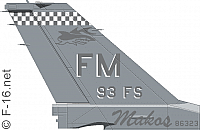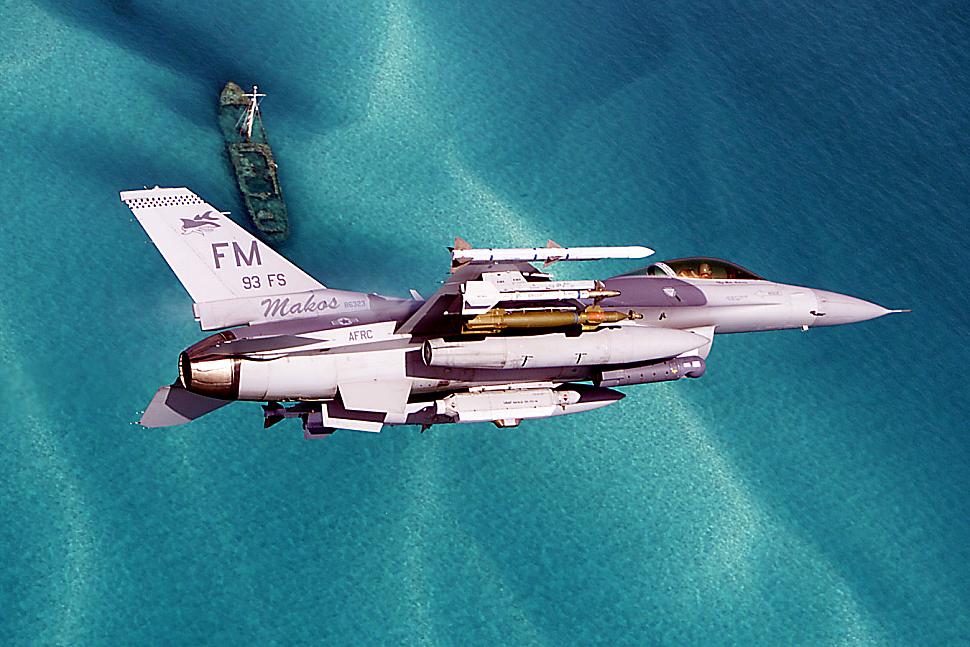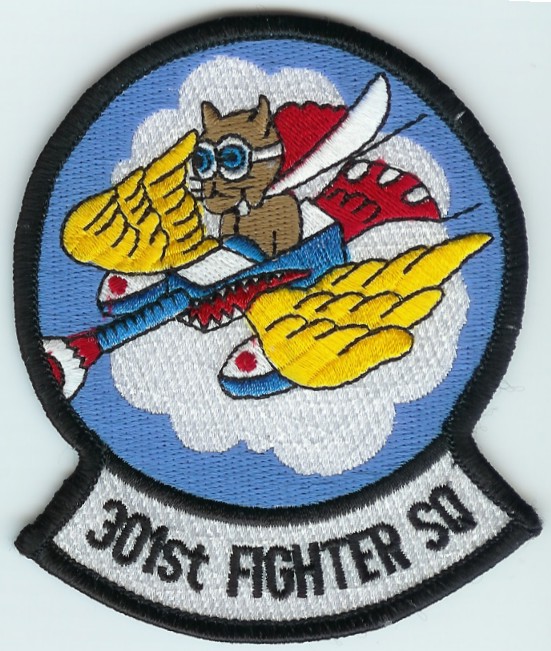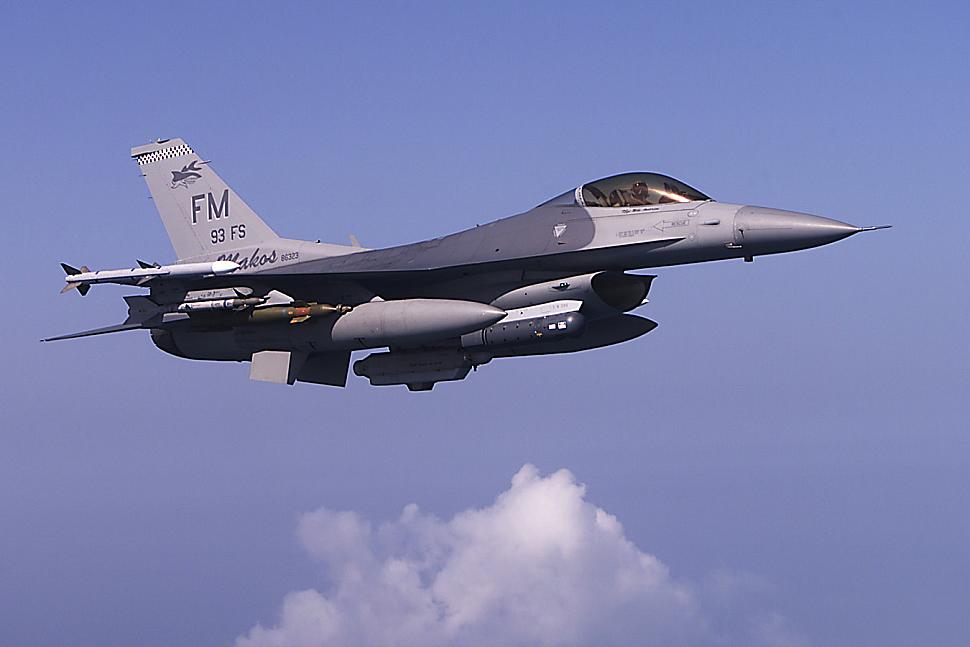 |
United States of America
Air Force Reserve Command - AFRC
|
Introduction
The USAF Air Force Reserve Command fleet consist of block 25 and Block 30/32 F-16s. Despite its "Reserve" name, the AFRC participates in combat deployments, and its F-16s are regularily deployed to conflict zones.
History
In March of 1982, the USAF announced that the Air Force Reserve would be supplied with F-16A/B Fighting Falcons. This was a departure from normal policy: up to then, the Air Force Reserve inventory had always been made up of older aircraft which had been passed on by the active units. In the early 80s, both the Air Force Reserve and the Air National Guard started taking up a greater responsability in the US Air Force. Initially reserve units were intended to perform aerial transport, but from the 80s onwards the AFRes assumed a variety of roles, including combat, medical evacuation, search and rescue, and even strategic bombing. To accomplish these missions, and in order to be able to adequately supplement active forces, reserve units were assigned the latest aircraft types and equipment.

Inventory
USAF Air Force Reserve Command Inventory
AFRes units started receiving F-16A/Bs in the mid 80s. In January 1984, the 419th Tactical Fighter Wing based at Hill AFB in Utah became the first Air Force Reserve unit to take delivery of the F-16. F-16A/B blocks 1, 5, and 10 aircraft passed on from the 388th TFW (also based at Hill) replacing F-105 Thunderchief fighter bombers. Later on, the AFRes received the more advanced Block 25 and Block 30/32 F-16C/D models.
After the fall of the Berlin Wall, the AFRes units suffered from the restructuring of the USAF. The reason lies in the very nature of the AFRes. The command was established to form a backup force for the regular USAF in times of crisis. The danger of a major conflict disappeared after the Cold War, therefore there was no longer a reason to keep an extensive reserve force. At the same time the ANG command became a major contributor to national security, forming the largest F-16 community within the USAF. With the ANG providing units during Desert Storm in 1991, it became the de facto US reserve force. As a result, the AFRes (by now renamed to Air Force Reserve Command) lost half of its F-16 units. Units at Tinker AFB, Wright-Patterson AFB, Bergstrom AFB and New Orleans NAS were closed down, with units remaining only at Fort Worth NAS, Hill AFB, Homestead ARS and Luke AFB.
A new squadron was added to the USAFRes on March 3rd, 2000, when the 301st Fighter Squadron was activated. This unit has history going back to World War II with the Tuskegee pilots of the USAAF. When the unit was reactivated in March of 2000, the patch used was the same design that was used over 50 years earlier. The 301st Fighter Squadron is unique in the Reserve F-16 communitee, in that it has no aircraft of its own. Instead the 301st uses the many aircraft available at Luke AFB where the unit calls home. The 301st Fighter Squadron was created out of a desire to retain experienced pilots for the role of instructors. Pilots in this Reserve unit are used to supplement the active squadrons at Luke AFB but do so on a part time basis. These pilots are part of the Reserve Instructor Pilot Association and work typically 8 days of a month with about 7 flights, but are required to maintain 60 flights per year (5 per month). Because of the role with the active units it is a joint role with the Air Education and Training Command. The 301st does fall under both the 57th FW and the 944th FW commands. The 944th FW provides the administration such as financing and hiring for example. This unit has become very successful and has continued to grow with more pilots then squadrons with aircraft in their inventory.
Please refer to our USAF Air Combat Command article for an overview of the full USAF inventory.

Modifications & Armament
Armament
Currently, All AFRC F-16 units are equipped with block 25 and block 30/32 model F-16s. The block 25 aircraft mainly perform air-to-air missions. The AFRes inherited these missions from the ANG when their F-16 ADF went out of service. The block 30/32 aircraft mostly perform air-to-ground missions. During the last few years, the service has become more versatile in its missions, because of the introduction of the Litening targeting pod. This pod is certified for use on the block 30/32 aircraft. The Litening pod is a derivative of the well-known LANTIRN system developed by Lockheed-Martin Co. The Litening pod provides the AFRC F-16s with an all-weather day and night fighting capability.

Operational Service
Units
Please refer to the F-16 Units section for an overview of units.Deployments
Air Force Reserve F-16s participated in Operation Provide Comfort in 1991.
After all the Air Force Reserve units missed out on Desert Storm, many units were brought up to take on the roll for ONW/OSW. After 9/11 F-16s of the Air Force Reserves found themselves in role of air defense during Operation Noble Eagle.
The Reserves were kept busy in Operation Enduring Freedom. In fact, all operational Reserve F-16 units (except the 301st), the 93rd FS, 302nd FS, 457th FS and 466th FS were on a regular scheduled expitionary detail for 90 days for OSW when attention was turning towards Afghanistan. Lieutenant Colonel Mike Brill, a Reserve pilot with over 5000 hours in the F-16 was part of the 466th FS that flew combat missions over Afghanistan. The 302nd FS was later to go on to help out in Operation Iraqi Freedom.
Please use this form to add any list any error or omissions you find in the above text.
Note: your comments will be displayed immediately on this page. If you wish to send a private comment to the webmasters, please use the Contact Us link.
